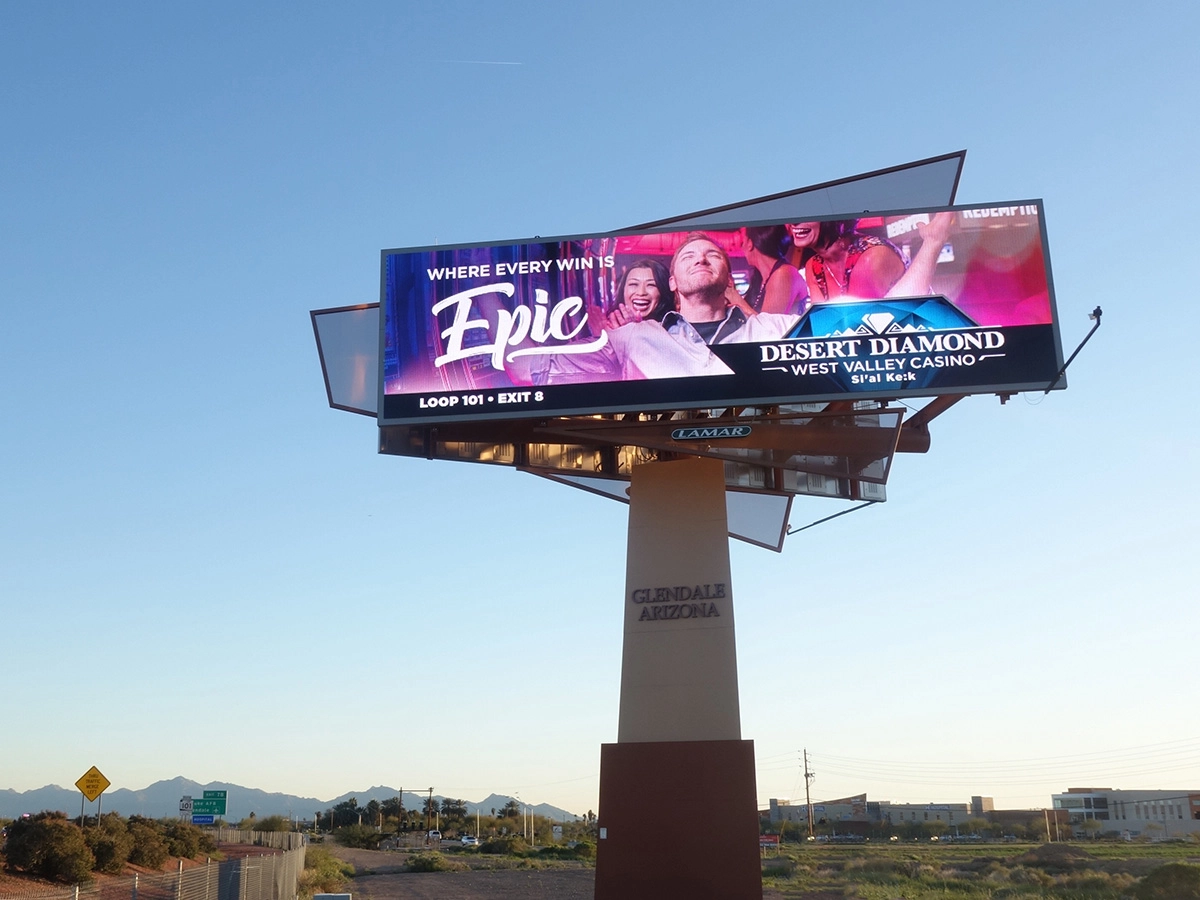
The Federal Highway Administration (FHWA) conducted a comprehensive study to evaluate the safety of Commercial Electronic Variable Message Signs (CEVMS), commonly known as LED billboards, on driver visual behavior. This study is crucial for understanding the impact of these modern advertising technologies on road safety.
The study utilized an eye-tracking system to measure driver glances while driving in the presence of CEVMS, standard billboards, and other roadside elements. The primary objective was to determine whether CEVMS cause significant driver distraction compared to traditional billboards.
Key Findings
- Driver Glance Behavior: The study found that drivers’ glance behavior towards CEVMS was similar to that towards standard billboards. The average duration of glances at CEVMS was not significantly longer than glances at traditional billboards, indicating that CEVMS do not cause excessive distraction
- Time Spent Looking at the Road: Drivers spent a comparable amount of time looking at the road ahead when CEVMS were present, as they did with standard billboards. This suggests that CEVMS do not detract from the critical task of monitoring the roadway
- Visual Complexity: The study also considered the visual complexity of the driving environment. It was observed that in visually complex areas, the presence of CEVMS did not significantly alter driver glance patterns. This indicates that CEVMS blend into the visual landscape without causing additional distraction
- Daytime vs. Nighttime Driving: The research included both daytime and nighttime driving conditions. The results showed no significant difference in driver glance behavior towards CEVMS between these two conditions. This consistency further supports the safety of CEVMS under varying lighting conditions
Implications for Road Safety
The findings from the FHWA study provide strong evidence that CEVMS, or LED billboards, do not pose a greater risk to driver safety compared to traditional billboards. This is an important consideration for policymakers, highway engineers, and the outdoor advertising industry.
Benefits of LED Displays
- Enhanced Visibility: LED displays offer superior visibility, especially in low-light conditions. This can be beneficial for conveying important information to drivers, such as traffic updates and emergency alerts.
- Dynamic Content: The ability to change content dynamically allows for more effective communication. Advertisers can update messages in real-time, ensuring that the information is always relevant and timely.
- Energy Efficiency: LED technology is more energy-efficient compared to traditional lighting methods. This not only reduces operational costs but also aligns with sustainability goals.
Conclusion
The FHWA study provides compelling evidence that LED billboards are a safe and effective medium for outdoor advertising. Their impact on driver visual behavior is comparable to that of traditional billboards, and they offer additional benefits such as enhanced visibility and dynamic content capabilities. As the technology continues to evolve, LED displays are likely to become an increasingly integral part of the roadside landscape, contributing to both effective communication and road safety.
For more detailed information, you can refer to the full report on the FHWA website: Final – Visual Behavior Report – Outdoor Advertising Control – Real Estate – FHWA
